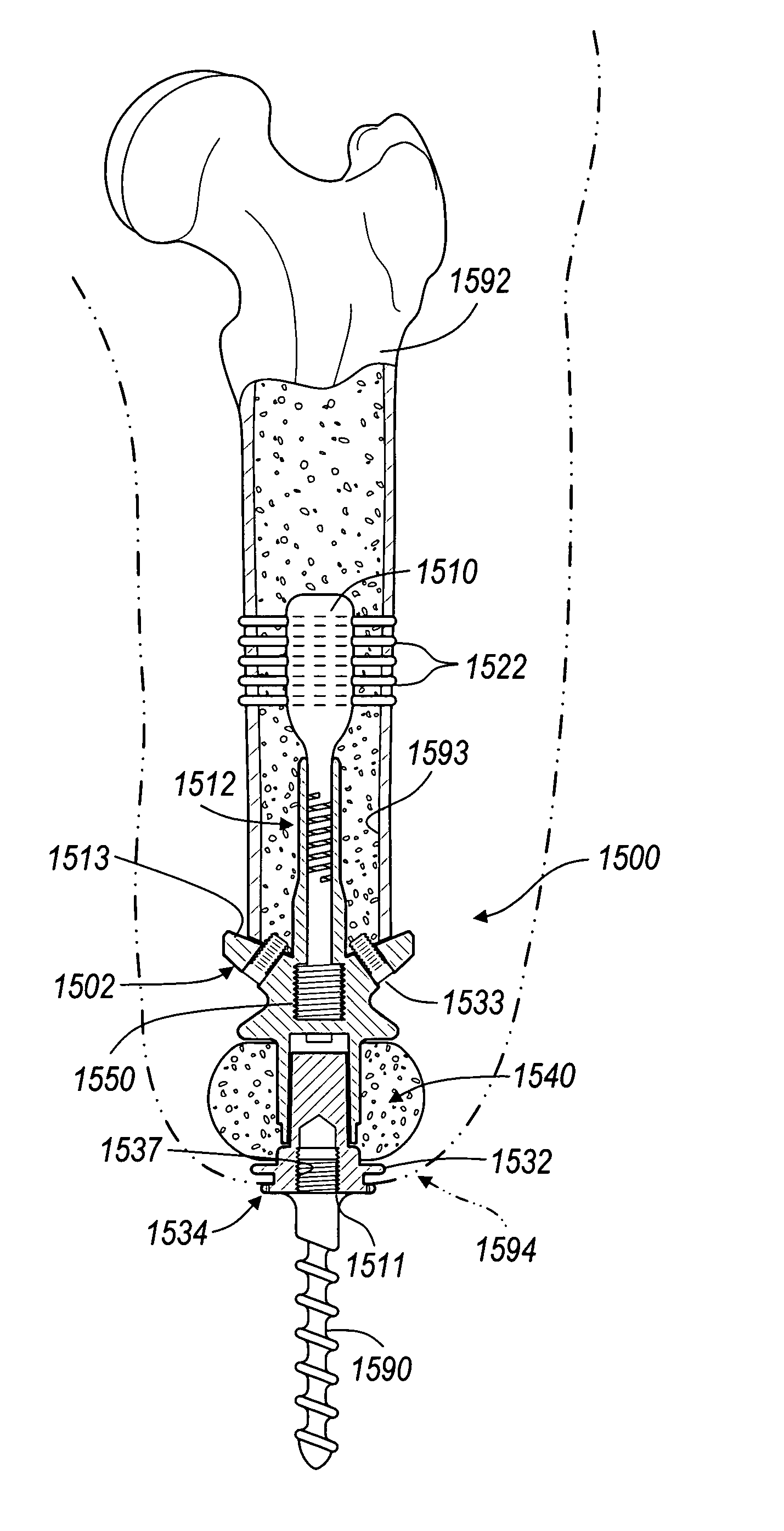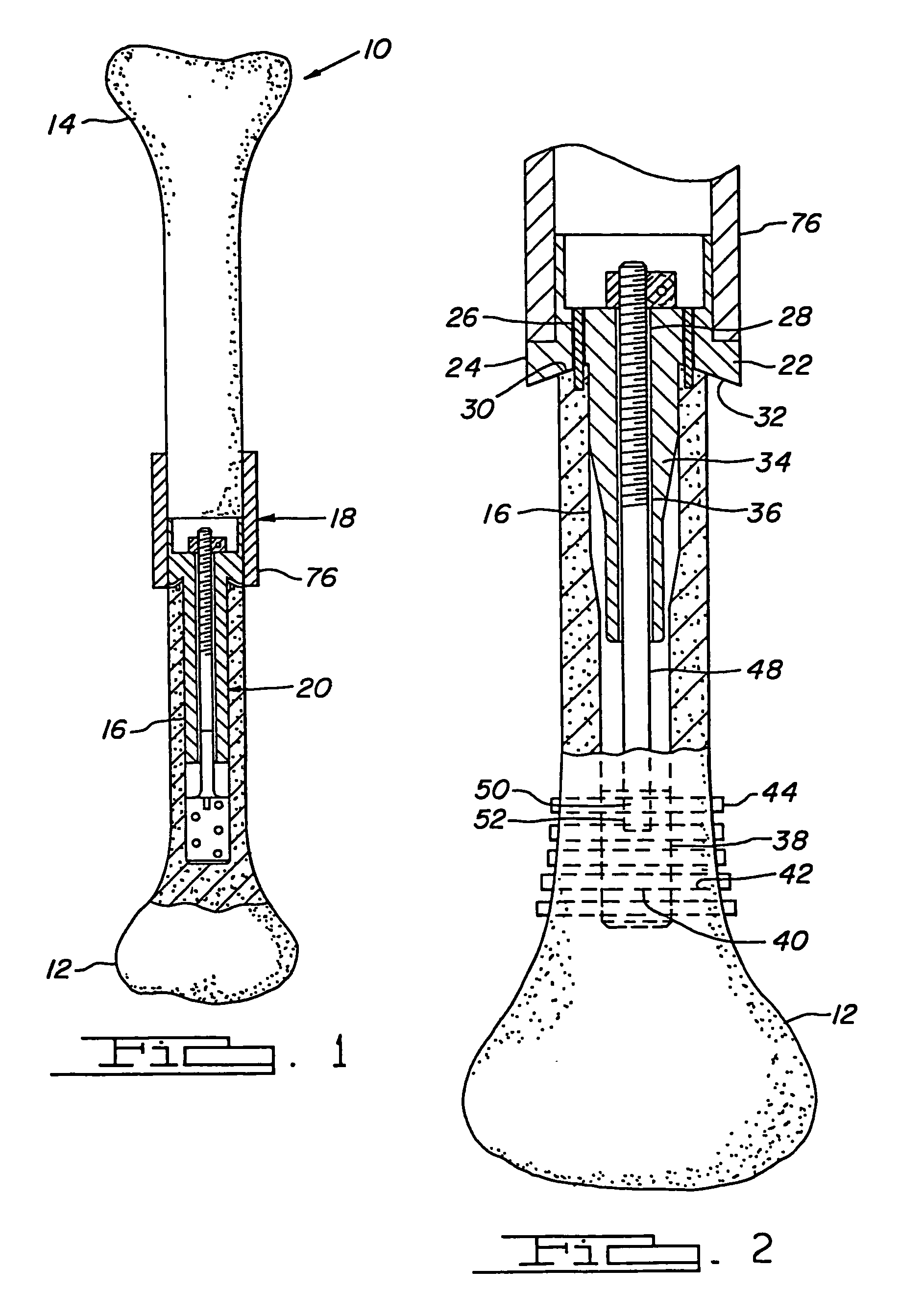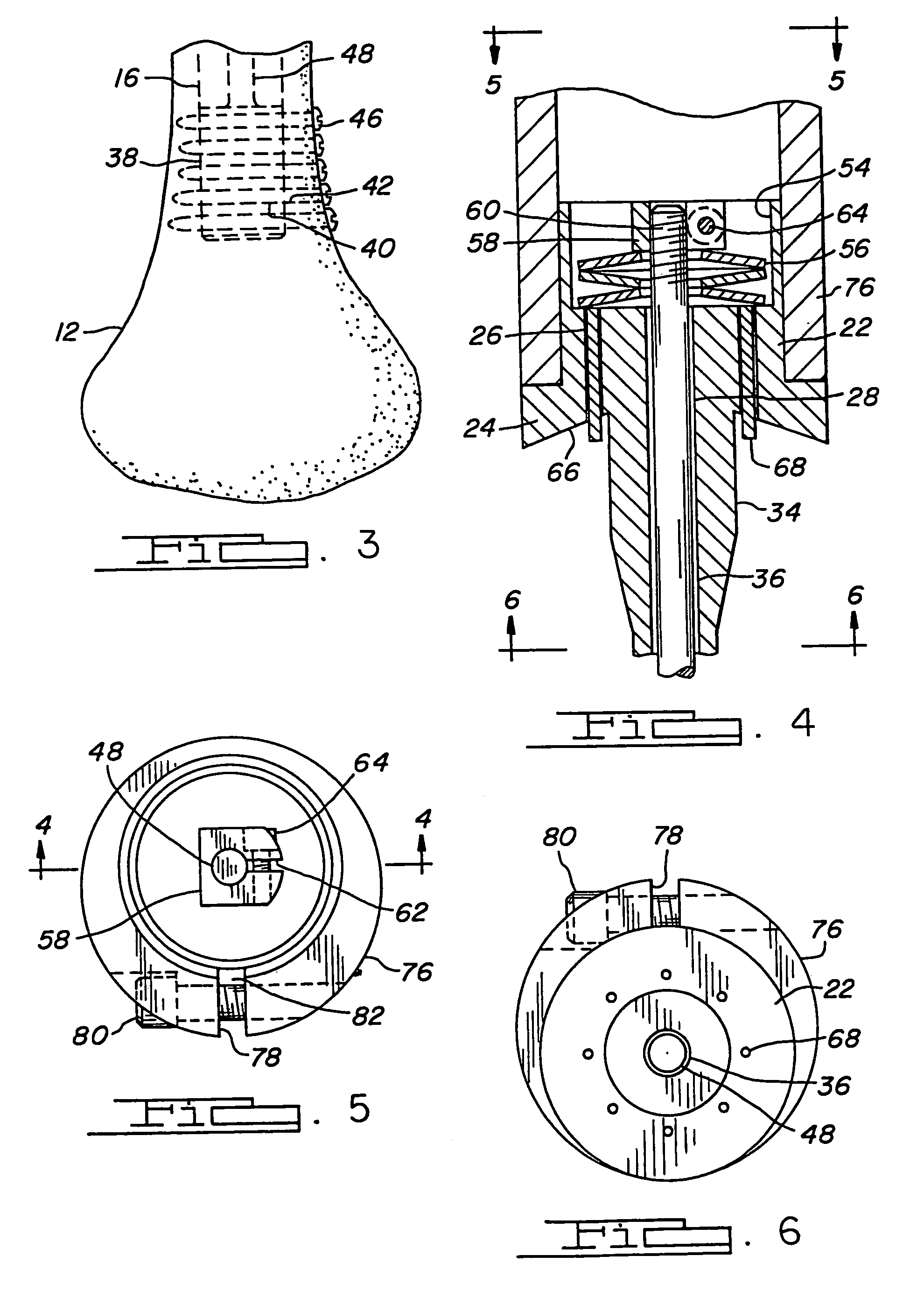Compliant fixation of external prosthesis
a technology for fixing external prostheses and prostheses, applied in the direction of prosthesis, femoral heads, osteosynthesis devices, etc., can solve the problems of increased possibility of bone failure or loosening of the bone-stem interface, loss of bone density, and insatiable biomechanical fixation of intramedullary devices at the mid-diaphyseal level
- Summary
- Abstract
- Description
- Claims
- Application Information
AI Technical Summary
Benefits of technology
Problems solved by technology
Method used
Image
Examples
second embodiment
[0125]In the version of the present invention shown in FIG. 15, the first intramedullary cavity 204 is an enlarged natural intramedullary cavity of the bone. The first intramedullary cavity 204 thus substantially coincides in its longitudinal axis with that of the natural intramedullary cavity of the bone. The bone attachment assembly 200 may also be inserted within the natural intramedullary cavity of the bone, without further enlargement, where suitable.
[0126]The bone attachment assembly 200 is constructed of a suitable biocompatible material, such as those previously described. It will be appreciated that all of the materials set forth in the second embodiment herein may be made from the same materials as previously described or any other suitable materials. The bone attachment assembly 200 includes a main body 206 that is substantially cylindrically-shaped, and is preferably operable to be positioned upon a surface of the first remaining bone portion 202. To provide means for co...
third embodiment
[0156]Referring now to FIGS. 27–31, there is shown a first version of the present invention. In this embodiment, the bone attachment assembly is provided with a sleeve for inhibiting tilting of the compliant section of the assembly in a non-axial direction. This sleeve is preferably an integral extension connected to the main body of the assembly. The bone attachment assembly also includes several additional variations of anchor bodies, which may be secured within a remaining bone portion in different ways. In addition, in this embodiment, the compliant section is provided as an integral extension upon the anchor body.
[0157]FIG. 27 is an exploded elevational view of a bone attachment assembly, generally at 500, in a modular form. The bone attachment assembly 500 includes a main body 502 having a shoulder portion 504 and an interface surface 506, in similar manner as before. The interface surface 506 is shown to be disposed at an angle relative to the longitudinal axis of the main bo...
PUM
 Login to View More
Login to View More Abstract
Description
Claims
Application Information
 Login to View More
Login to View More - R&D
- Intellectual Property
- Life Sciences
- Materials
- Tech Scout
- Unparalleled Data Quality
- Higher Quality Content
- 60% Fewer Hallucinations
Browse by: Latest US Patents, China's latest patents, Technical Efficacy Thesaurus, Application Domain, Technology Topic, Popular Technical Reports.
© 2025 PatSnap. All rights reserved.Legal|Privacy policy|Modern Slavery Act Transparency Statement|Sitemap|About US| Contact US: help@patsnap.com



